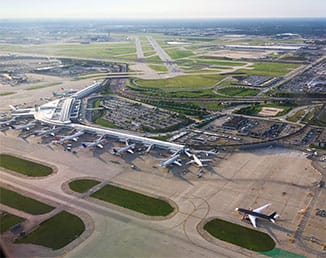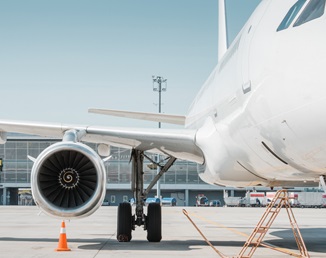
Cirium Ascend Consultancy is trusted by clients across the aviation industry to provide accurate, timely, and insightful aircraft appraisals. The team provides the valuations and analysis the industry relies on to understand the market outlook, evaluate risks and identify opportunities.
Discover the team’s industry reports & market commentaries. Read their latest expert analysis, viewpoints and updates on Thought Cloud.

Rob Morris, Global Head of Consultancy, Cirium Ascend Consultancy
Since the unfortunate 737-9 Max accident in January laid bare Boeing’s continued 737 production woes, we have been asked many times about the potential for COMAC to step up and fulfill single-aisle aircraft demand which is being frustrated by slow Boeing deliveries. The question is further magnified when considering Airbus’s own struggles to ramp A320 family production, which came close to averaging 60 aircraft per month in 2019 before reverting to less than 40 per month through the pandemic, up from the current 50 or so per month towards the planned target of 75 per month in 2026. As one senior leasing executive put it at ISTAT Asia in Hong Kong in early May “Boeing and Airbus have offered a window of opportunity for COMAC”. Another said “AB today becomes ABC in ten-years time”. In essence, the door is open for COMAC but can they step through it?
From a demand perspective, the opportunity certainly exists.
Our latest Cirium Fleet Forecast, published in November 2023, projects demand for more than 40,000 single-aisle and twin-aisle passenger jet deliveries over the next 20 years.
In the 20-year period 2000-2019 Airbus and Boeing between them delivered just under 19,600 commercial passenger jets (including five from the legacy McDonnell-Douglas range which Boeing had acquired in 1997, rendering 2000 the year that the large commercial aircraft market became the duopoly we know today). Hence, unless today’s duopolists are able to double their output through 2043, there is certainly headroom for a third player.
But can COMAC step up with the current C919 to exploit the opportunity in the commodity single-aisle space where that demand projection estimates almost 33,000 deliveries? The orderbook signals optimism, with 998 aircraft currently recorded as on firm order in Cirium’s fleet database to add to the five which have already been delivered. However, as the chart below illustrates that backlog is shown as scheduled for delivery through 2040, a far longer delivery horizon than any competing Airbus or Boeing single-aisle. Only 46% of the backlog is committed to six airlines, all of whom are domiciled in China. The remaining 543 aircraft are on order with 12 operating lessors, all of whom are Chinese owned and domiciled aside from BOC Aviation. These aircraft will need to find customer placements and it is unusual for a new aircraft programme to feature so many lessors so early in its genesis. This perhaps suggests how airlines are viewing the C919 for now, although the recent orders for 100 each from Air China and China Southern are likely to have a much firmer status than many of the lessor orders.

Cirium’s Fleet Forecast also signals optimism, with the current projection for just under 1,700 C919 programme deliveries through 2042. The vast majority of those deliveries are expected to be to domestic customers, with only around 250 aircraft expected to be sold to export customers largely in belt and road countries where political influence can drive sales campaigns. With more than 6,000 new single-aisle deliveries expected in China over the forecast period, C919 is expected to capture around 25% market share compared to Boeing’s 30% and Airbus’s 45%.
With that optimism, how is COMAC performing today as it strives to break into the single-aisle market, and how does that performance benchmark to the most recent successful market entrant which of course was Airbus in the late 1980s? Airbus delivered its first A320 to Air France in March 1988. COMAC delivered its first C919 aircraft to China Eastern Airlines in December 2022. 17 months later, COMAC have now delivered five aircraft to that single customer. Within 17 months of the first delivery of its A320 back in 1988, Airbus had delivered 49 units to nine different airlines in Europe, North America and Asia. Ten times as many aircraft delivered globally by Airbus more than 35 years ago when the market was inter alia much smaller than it is today. Airbus did have one significant advantage over COMAC today, in that since the 1960s Airbus’s partner companies in France and the UK had manufactured and delivered more than 630 passenger single-aisle aircraft, Caravelles, Tridents and One-Elevens, to almost 90 customers globally, facilitating aircraft support networks which Airbus was able to leverage to ensure their customers enjoyed dispatch reliability and performance necessary to establish the A320 family as a credible and global competitor to the then competing Boeing and McDonnell Douglas single-aisle aircraft. COMAC does not have that support network in place and thus has to work very hard to build it to support airline customers who will be expecting performance and dispatch reliability that benchmarks favourably against those delivered by the established Airbus and Boeing products.
How are the aircraft already delivered performing today? Cirium’s data shows that China Eastern’s five aircraft are presently scheduled on three domestic routes from Shanghai Hongqiao to Chengdu, Beijing and Xi’an.
Flight tracking data confirms that in April the aircraft operated a total of 398 flights, averaging 5.9 hours per day.
In the same month, all Boeing 737-8 Max and A320neo in service in China averaged 8.1 and 8.4 hours flown per day respectively, so C919 is clearly being scheduled and flown conservatively for now averaging around 70% of the Boeing and Airbus peers, as the aircraft starts to prove itself in operational service. However, there are already signs of improvement since as recently as February C919 was achieving only around 50% of the average daily hours of 737 and A320. There are also signs of improvement from a route perspective, with a C919 reportedly scheduled to operate a single Shanghai Hongqiao to Hong Kong return sector on 1 June 2024, with further reports that this will subsequently become a regular route for the aircraft type.
What about the future? As already noted, Cirium’s backlog indicates an expectation that COMAC will deliver more than 130 aircraft to customers in 2031. COMAC themselves have stated an intention to develop a production capacity of up to 150 aircraft annually within the next five years. COMAC are also developing a family of aircraft, somewhat akin to Airbus’s strategy with the A320 augmented with smaller and larger A319 and A321 variants. The shorter fuselage ‘plateau’ version was launched in February with an order by Tibet Airlines. At face value the potential to manufacture 150 aircraft annually by 2029 seems ambitious. It took Airbus more than ten years to achieve more than 150 annual deliveries, albeit the 168 A320 family aircraft delivered in 1998 did represent more than 30% market share in the then single-aisle market where Boeing delivered 324 aircraft that year and McDonnell Douglas (by then owned wholly by Boeing) delivered 42 aircraft. Cirium’s forecast projects delivery of around 1,800 single-aisle aircraft globally in 2029, so 150 aircraft from COMAC would represent less than 10% of the total market.
There is no doubt that the door is potentially open for COMAC to step through and join Airbus and Boeing in the large commercial aircraft market. However, this analysis suggests that the pace at which COMAC will walk through that door is relatively slower than Airbus walked through the same door more than 30 years ago. At present Boeing is clearly weakened, but with time Boeing will fix its issues and return the Boeing 737 family to a level of production some four times larger than COMAC’s stated intent in 2029. In the same timescale Airbus is likely to be producing its own A320 family at around six times the scale that COMAC intend.
The barriers to entry in the large commercial aircraft market have always been huge – potentially insurmountable for many as witnessed by Bombardier’s ultimately doomed efforts with its CSeries. COMAC are the latest challenger. COMAC does enjoy is a huge domestic market, where China will perhaps consume as many as 15% of all new single-aisle deliveries. It can leverage that domestic market to generate sales. But for now the relative pace of those sales seems set to be much slower than even Airbus achieved as it entered the market in the 1980s. Hence, it seems likely that it will be a very long time before AB today genuinely becomes ABC.
LEARN MORE ABOUT CIRIUM FLEET FORECAST.




























































